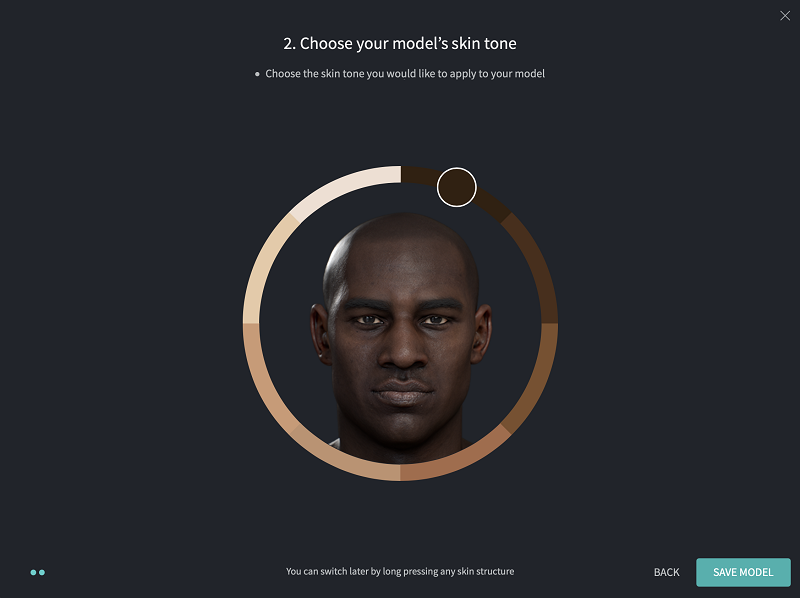Elsevier has announced the newest edition of its 3D anatomy teaching platform, Complete Anatomy 2023, which will feature the most-expansive skin tone library ever available in global health education.
The release delivers the next step in Elsevier’s commitment to increasing diversity and inclusion in medical education and comes hot on the heels of the company’s release last year of the world’s-most-advanced 3D full female anatomy model, breaking a centuries-long pattern of male-dominated teaching models.
For hundreds of years, light-skinned bodies have dominated anatomy learning, underscoring the lack of racial representation in global teaching materials.
A 2018 study in the Journal of Medical Education and Curricular Development found that less than 5% of images in general medical texts included dark skin tones.
A broad spectrum
The team at 3D4Medical from Elsevier, the creators of Complete Anatomy, spent years meticulously researching and consulting with anthropologists, ancestral diversity experts, professors, students, and 3D artists to develop a broad spectrum of skin tones and facial features so students around the world can learn from a model that more closely represents them and the patient populations they will serve.
This is a pivotal step to address a prevalent bias in the healthcare field and a move that will hopefully put us on course to creating a more-representative and inclusive environment for all those that dedicate themselves to the health and service of others
And it marks an important step in addressing unconscious bias in future clinicians.
Jan Herzhoff, president of Elsevier Health, said: “As a world leader in health education, we are committed to advancing inclusion in healthcare and creating an inclusive learning experience for all students and clinicians.
“Complete Anatomy 2023 reflects years of work to ensure the highest standard for racial diversity in medical teaching and training materials.
“This is the latest milestone on Elsevier’s journey to making sure everyone feels represented in medical education resources and providing more-racially-equitable learning opportunities to help improve patient outcomes.”
With over 20 million downloads and over 3.4 million active users, Complete Anatomy by Elsevier is the world’s-most-advanced 3D anatomy platform used at more than 500 institutions and clinical organisations globally.
A study found that less than 5% of images in general medical texts included darker skin tones
Part of the solution
And users will now be offered a range of facial characteristics and skin tones to customise their model (male or female) for lessons.
Irene Walsh, director of product, content, and design at 3D4Medical from Elsevier, said: “The urgent need to actively introduce broader representation into learning resources for future healthcare professionals is well documented.
This is the latest milestone on Elsevier’s journey to making sure everyone feels represented in medical education resources and providing more-racially-equitable learning opportunities to help improve patient outcomes
“As a global product, Complete Anatomy is invested in leading the way to offer diverse materials for students, educators, and clinicians to help create an inclusive approach to their learning and teaching.
“We want to be part of the solution and aim to deliver world-class anatomical accuracy and virtual dissection capabilities with inclusivity at the heart of everything we do.”
The positioning of the light-skinned European male as the universalised default goes back to the advent of anatomy study in the western world.
Centuries later, diverse skin tones and facial features are still lacking; something that can negatively impact patient care.
A study published in the American Journal of Public Health found that racial bias amongst healthcare workers can be linked to poorer patient outcomes for people of colour.
One important example is in skin cancer treatment, which requires clinicians to look for melanomas on nails, hands, and feet.
The software will help to diagnose conditions such as Lyme disease and melanomas
An age-old problem
However, melanomas can appear differently on differing skin tones, resulting in an inaccurate or delayed diagnosis if a healthcare professional is not familiar with how melanomas present on differing skin tones.
The same problem can be seen when diagnosing conditions such as Lyme disease, according to a study published in the Journal of General Internal Medicine.
The striking absence of different skin tones and different physical traits in the medical field is something universities and health educators of all kinds are finally taking notice of
Due to darker skin tones not represented enough in medical textbooks, it is difficult for physicians to recognise dermatologic manifestations in diseases such as Lyme disease.
And a delayed diagnosis can ultimately lead to patients suffering from more-severe neurological issues.
Dr Fatimah Jackson, professor of biological anatomy at Howard University, said: “The striking absence of different skin tones and different physical traits in the medical field is something universities and health educators of all kinds are finally taking notice of.
“For so long, students and faculty of colour have had to learn and teach in what has in ways been an unfamiliar setting.
“This is a pivotal step taken by 3D4 Medical from Elsevier to address a prevalent bias in the healthcare field and a move that will hopefully put us on course to creating a more-representative and inclusive environment for all those that dedicate themselves to the health and service of others.”




